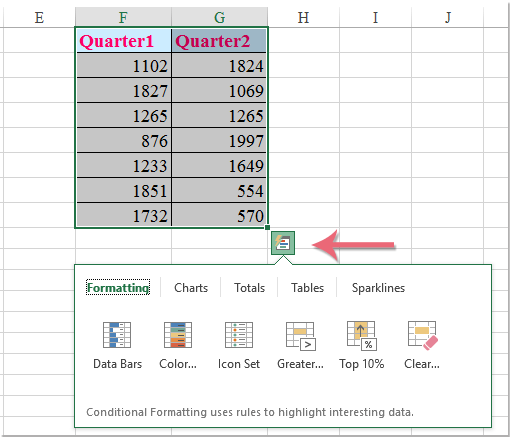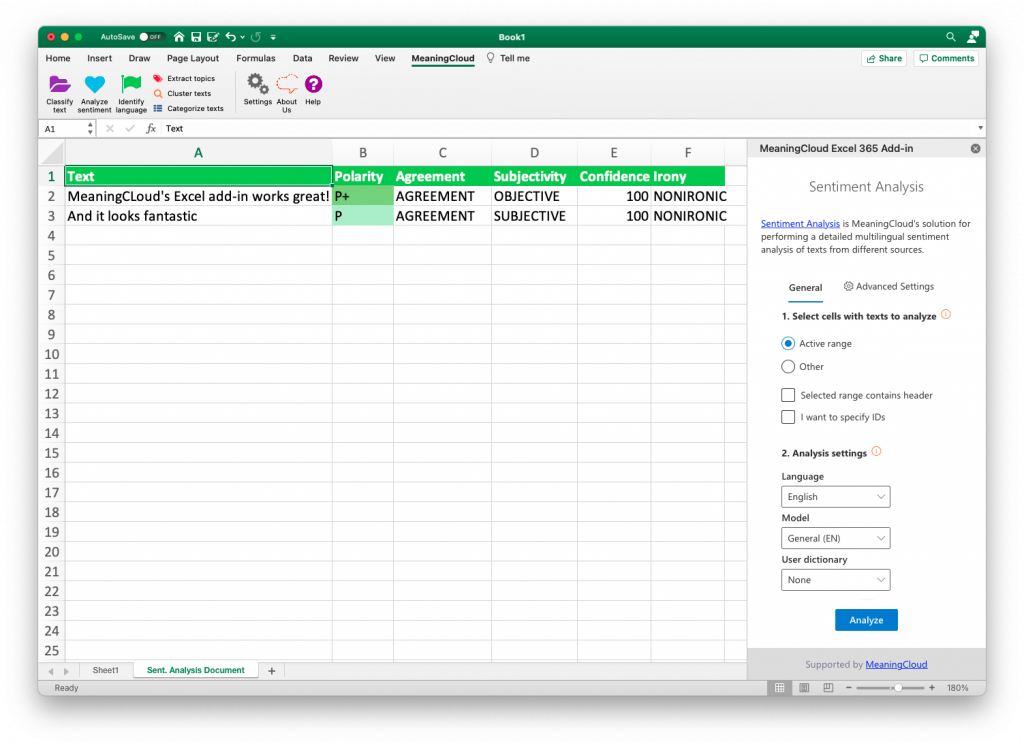

Point to the button with the type of total calculation you would like to use such as Sum (if you simply point to the button, you will see a live preview). A gallery appears with tabs across the top and buttons below each tab. How do I view quick analysis totals gallery?Ĭlick the Quick Analysis Smart Tag icon or press Control + Q. Select the range A1:D7 and add a column with a running total. For example, click Totals and click Sum to sum the numbers in each column. Using the Quick Analysis tool to insert totals to the right of a selection Select the range of cells you want to summarize. Select a range of cells and click the Quick Analysis button.

Which of the following is the Quick Analysis Tool used for? Insert charts, sparklines, pivot tables, and conditional formatting. Instead of displaying a total row at the end of an Excel table, use the Quick Analysis tool to quickly calculate totals. Which of the following is the quick analysis tool used for? To access Quick Access tool, select the cells that contain the data you want to analyze. You can use Quick Analysis with a range or a table of data. In Microsoft Excel 2013, the Quick Analysis tool makes it possible to analyze your data quickly and easily using different Excel tools. Note: You can also press Ctrl+Q on the keyboard to display the Quick Analysis options.In the Excel Options dialog box, on the General tab check or uncheck Show Quick Analysis options on selection:.On the File tab, click the Options button:.A checkbox on the bottom of the resulting popup window is labeled Transpose. Simply copy the row or column you’d like to transpose, right click on the destination cell and select Paste Special. Quick Note: It’s one of those Excel Tips that can help to get better at Basic Excel Skills. Sometimes you’ll be working with data formatted in columns and you really need it to be in rows (or the other way around). It is a fixed toolbar that can’t be free-floating, and commands on the Quick Access toolbar always appear as small icons without any text (except autosave switch).

Transposing columns into rows (and vice versa) You can create many different kinds of rules, with unlimited formats available via the custom format function within each item. Using the Less Than conditional format, you can format cells that are less than -20 (a 20-point drop) with the Red Text or Light Red Fill with Dark Red Text function. Recently (last couple of weeks or so), when I use the fill handle, that option menu is gone and has been replaced by the Quick Analysis menu (Formatting, Charts, Totals, Tables, Sparklines) and I cant get the Fill handle menu back, even when I go to the Options menu to disable the Quick Analysis menu. The features you’ll use most often are in the Highlight Cells Rules submenu.Ĭonditional Formatting lets you easily highlight data points of interest.įor example, say you’re scoring tests for your students and want to highlight in red those whose scores dropped significantly. Select the range of cells you want to format, then click the Conditional Formatting dropdown. Find this feature on the Home tab in the taskbar. For example, you can identify students who scored 80 points or higher by having the cell report “Pass” if the score in column C is above 80, and “Fail” if it’s 79 or below.įor most tables, Excel’s extensive conditional formatting functionality lets you easily identify data points of interest. IF and IFERROR are the two most useful IF formulas in Excel. The IF formula lets you use conditional formulas that calculate one way when a certain thing is true, and another way when false. Don’t be afraid to play around in here-there are a surprising number of options.Įxcel 2013 includes Recommended Charts with layouts based on the type of data you’re working with. Once the generic version of that chart is created, go to the Chart Tools menus to customize it. To create a chart, enter data into Excel with column headers, then select Insert > Chart > Chart Type. Excel 2013 even includes a Recommended Charts section with layouts based on the type of data you’re working with. Then enter the range of cells in the sheet or workbook from which you need to pull data, the column number for the data point you’re looking for, and either “True” (if you want the closest reference match) or “False” (if you require an exact match). Summon the Vlookup formula in the formula menu and enter the cell that contains your reference number.


 0 kommentar(er)
0 kommentar(er)
